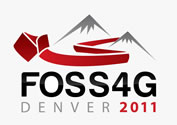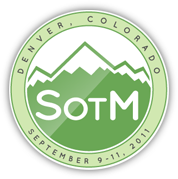Decision Support System for Environmental Regulation and Licensing
The Embrapa Agricultural Informatics, decentralized unit of the Brazilian Agricultural Research Corporation (Embrapa), is developing a system for environmental regulation and licensing, called SISLA - Interactive System Support for Environmental Licensing. At first, the system is being used by the state of Mato Grosso do Sul, and the peculiarities of the system to specifically meet this state are being developed in partnership with the Environment Institute of Mato Grosso do Sul (Imasul).
The SISLA was conceived with the use of free or open source tools, such as PostgreSQL and its spatial extension PostGIS, MapServer and i3Geo. Among its main features, stand out the analysis of georeferenced surrounding farms applicants for environmental licensing for projects; queries georeferenced of licensing procedures; and technical analysis of the licensing process. The first allows enterprising to check, quickly and simply by the Internet, the proximity or intersection of your property in relation to protected areas by the state government. The second allows managers to monitor the evolution of state licensing processes in the various municipalities that comprise the state. Finally, the third allows a visual analysis of the areas of licensing applicants for technical expertise as well as its comparison with other themes, including satellite imagery, in order to find irregularities that might impede the continuity of the process.
In the third feature mentioned above, was created a decision support module regarding the acceptance of environmental licensing processes. In the current version, the module is capable of providing decision support for processes in forest area, as Settlement of Legal Reserve, Vegetable Suppression and Charcoal. Based on data obtained through of queries based on georeferenced data, such as distance from the property in relation to protected areas and indigenous lands, the volume of timber produced, among others, the system uses fuzzy logic to provide support to decision making . Thus, the input data are fuzzified and consequently inferred by different methods such as center of gravity, center of area and maximum average. The defuzzification results in a variable called "Fitness", which will provide a response to the technical if process tends to be accepted, rejected, or is expected to generate disputes.
The determination of input and output variables, as well as their membership functions, is the result of the joint study of state law by analysts and researchers at Embrapa and technicians at Imasul.
Graduate at Computer Science from São Pauo University (2003) and master's at Electric Engineering from São Paulo Univesity (2008). Systems Analist from Embrapa since 2007.











